Migraine lasts how long. Migraine Duration: Understanding Symptoms, Triggers, and Treatment Options
How long does a typical migraine last. What are the four stages of a migraine attack. Which treatments can help relieve migraine symptoms. When should you seek medical help for migraines.
The Four Stages of a Migraine Attack
Migraines are complex neurological events that often progress through four distinct stages. Understanding these phases can help individuals better manage their condition and take proactive steps to mitigate symptoms. Let’s explore each stage in detail:
1. Prodrome Stage
The prodrome stage, also known as the premonitory or warning stage, serves as an early indicator of an impending migraine attack. This phase can begin anywhere from a few hours to several days before the onset of more severe symptoms.
- Duration: Hours to days
- Common symptoms:
- Anxiety
- Fatigue
- Food cravings
- Increased thirst and urination
- Mood changes
- Neck stiffness
2. Aura Stage
The aura stage affects approximately 25% of migraine sufferers and typically occurs shortly before the main headache phase. It is characterized by sensory disturbances that can range from visual phenomena to speech difficulties.

- Duration: 20-60 minutes
- Common symptoms:
- Visual disturbances (flashing lights, zigzag lines, blind spots)
- Numbness or tingling in limbs
- Speech impairment
- Dizziness
- Auditory hallucinations
3. Headache Stage
The headache stage is often considered the most severe and debilitating phase of a migraine attack. It can significantly impact an individual’s ability to function normally.
- Duration: 4-72 hours (if untreated)
- Common symptoms:
- Throbbing pain on one or both sides of the head
- Sensitivity to light, sound, and sometimes odors
- Nausea and vomiting
- Blurred vision
- Dizziness
4. Postdrome Stage
The postdrome stage, experienced by about 80% of migraine sufferers, follows the headache phase and is often described as a “migraine hangover.”
- Duration: 24-48 hours
- Common symptoms:
- Fatigue
- Difficulty concentrating
- Mood changes (elation or depression)
- Weakness
- Mild head pain upon sudden movement
Factors Influencing Migraine Duration
The duration of a migraine attack can vary significantly from person to person and even between episodes for the same individual. Several factors can influence how long a migraine lasts:

- Individual physiology
- Frequency of attacks
- Presence of triggers
- Effectiveness of treatment
- Lifestyle factors
In most cases, untreated migraines typically last between 4 and 72 hours. However, some individuals may experience a particularly severe form known as status migrainosus, where symptoms persist for more than 72 hours, even with treatment.
Common Migraine Triggers and Their Impact
Identifying and avoiding migraine triggers can play a crucial role in managing the frequency and severity of attacks. While triggers vary from person to person, some common culprits include:
- Stress and anxiety
- Hormonal changes (particularly in women)
- Certain foods and beverages (e.g., alcohol, caffeine, aged cheeses)
- Changes in sleep patterns
- Environmental factors (bright lights, strong odors, weather changes)
- Dehydration
- Skipping meals
- Certain medications
Understanding personal triggers can help individuals take proactive steps to reduce the likelihood of migraine attacks. Keeping a migraine diary to track potential triggers and symptoms can be an effective tool in identifying patterns and developing personalized prevention strategies.

Effective Treatment Strategies for Migraines
Managing migraines often involves a combination of preventive measures and acute treatments. The goal is to reduce the frequency and severity of attacks while providing relief during an episode. Here are some effective treatment strategies:
Acute Treatments
- Over-the-counter pain relievers (e.g., ibuprofen, aspirin, acetaminophen)
- Prescription medications:
- Triptans
- Ergotamines
- Anti-nausea medications
- Gepants (CGRP receptor antagonists)
- Non-pharmacological approaches:
- Cold or hot compresses
- Relaxation techniques
- Massage
- Acupressure
Preventive Treatments
- Medications:
- Beta-blockers
- Antidepressants
- Anticonvulsants
- CGRP monoclonal antibodies
- Lifestyle modifications:
- Regular exercise
- Stress management techniques
- Consistent sleep schedule
- Dietary adjustments
- Alternative therapies:
- Acupuncture
- Biofeedback
- Cognitive-behavioral therapy
Can early intervention shorten the duration of a migraine attack? Research suggests that treating a migraine at the first sign of symptoms can indeed help reduce its duration and severity. This approach, known as early intervention, often involves taking medication during the prodrome or early headache phase to prevent the attack from fully developing.
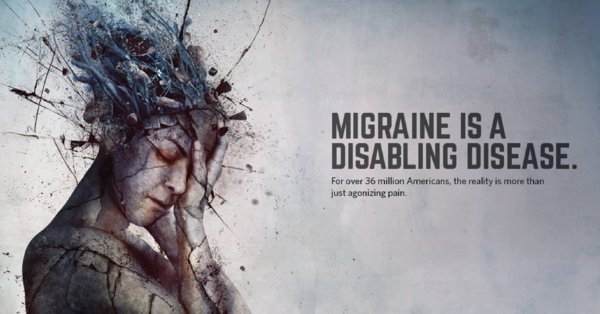
The Role of Lifestyle in Migraine Management
While medications play a crucial role in managing migraines, lifestyle factors can significantly impact the frequency and severity of attacks. Incorporating healthy habits into daily routines can help reduce the burden of migraines:
- Maintaining a consistent sleep schedule
- Practicing stress-reduction techniques (e.g., meditation, deep breathing exercises)
- Engaging in regular physical activity
- Staying hydrated
- Eating a balanced diet and avoiding known trigger foods
- Limiting caffeine and alcohol intake
- Managing screen time and exposure to bright lights
How can lifestyle changes impact migraine frequency and duration? By adopting healthy habits, individuals may experience fewer migraine attacks and potentially shorter durations when they do occur. These changes can help stabilize brain chemistry and reduce the likelihood of triggering an attack.
When to Seek Medical Help for Migraines
While many individuals can manage their migraines with self-care and over-the-counter treatments, there are instances where professional medical advice is necessary. Consider seeking medical help in the following situations:

- Migraines that consistently interfere with daily activities
- Headaches that worsen or don’t respond to treatment
- New or unusual headache patterns
- Headaches accompanied by neurological symptoms (e.g., confusion, seizures, vision changes)
- Severe headaches following head injury
- Headaches associated with fever, stiff neck, or rash
- Chronic daily headaches
Is there a point at which migraine duration becomes concerning? If a migraine persists for more than 72 hours despite treatment (status migrainosus), it’s crucial to seek immediate medical attention. Prolonged migraine attacks can lead to complications and may require specialized treatment.
Emerging Treatments and Research in Migraine Management
The field of migraine research is constantly evolving, with new treatments and approaches being developed to better manage this complex condition. Some promising areas of research include:
- Neuromodulation devices: These non-invasive devices use electrical or magnetic stimulation to disrupt pain signals and provide relief.
- CGRP-targeted therapies: Newer medications that target the calcitonin gene-related peptide (CGRP) pathway have shown promise in both acute and preventive treatment.
- Personalized medicine: Researchers are exploring genetic and biomarker-based approaches to tailor treatments to individual patients.
- Advanced imaging techniques: Improved brain imaging methods are helping scientists better understand the underlying mechanisms of migraines.
- Cognitive-behavioral therapy (CBT): Studies are investigating the effectiveness of CBT in combination with traditional treatments for migraine management.
What potential do these emerging treatments hold for reducing migraine duration and frequency? While more research is needed, early results suggest that these innovative approaches could offer new hope for individuals who have not found relief with conventional treatments. As our understanding of migraine pathophysiology improves, so too does the potential for developing more targeted and effective therapies.

The Impact of Migraines on Quality of Life
Migraines can have a profound impact on an individual’s quality of life, affecting various aspects of daily functioning and well-being. Understanding these impacts can help emphasize the importance of effective management strategies:
- Work productivity: Frequent migraine attacks can lead to missed workdays and reduced productivity.
- Social relationships: The unpredictable nature of migraines can strain personal relationships and limit social activities.
- Mental health: Chronic migraines are associated with an increased risk of anxiety and depression.
- Physical health: The pain and associated symptoms of migraines can impact overall physical well-being and energy levels.
- Financial burden: The cost of treatments and potential loss of income can create financial stress for individuals with chronic migraines.
How can addressing migraine duration and frequency improve overall quality of life? By effectively managing migraine attacks and reducing their frequency and duration, individuals may experience significant improvements in various aspects of their lives. This can include increased work productivity, better social engagement, improved mental health, and reduced financial stress associated with the condition.

In conclusion, understanding the duration, stages, and impact of migraines is crucial for effective management. By recognizing early warning signs, identifying triggers, and implementing appropriate treatment strategies, individuals can work towards reducing the burden of this complex neurological condition. As research continues to advance, new treatments and approaches offer hope for improved outcomes and better quality of life for those affected by migraines.
How long do migraines last? Duration, symptoms, and what to do
Migraine can cause severe, recurrent, and potentially disabling headaches that typically last from 4–72 hours. Symptoms may also include fatigue, impaired vision, and dizziness.
Many people associate migraine episodes with feelings of nausea, heightened sensitivity to light and sound, and occasionally skin and muscle sensitivity.
Migraine is surprisingly common. Around 39 million people in the United States experience this neurological disease’s incapacitating symptoms.
This article looks at how long migraine attacks last, migraine stages, causes, and common triggers. It then explores treatments, prevention, and when someone should seek help for symptoms.
Migraine is a complex condition with different stages and contributing factors. They can last from 4–72 hours if left untreated.
The length and frequency of migraine varies from person to person.
There is an especially intense form of migraine called status migrainosus (SM).
These long-lasting migraine headaches can cause symptoms for more than 72 hours, even with treatment.
Although exact epidemiological data is lacking, an 11-year study showed that SM affects around 3% of people with migraine.
Migraine progresses through different phases that lead on from each other. Not everyone will experience each phase with every migraine attack they have. The four stages are:
- prodrome
- aura
- headache
- postdrome
Each stage lasts a different length of time, varying between people and between each migraine attack.
Understanding the distinct phases of a migraine attack can help people manage the condition.
When someone recognizes the earliest symptoms of a migraine episode, they can take measures to prevent the situation from progressing.
Here is an outline of the stages, including duration and the most common symptoms someone may experience:
Prodrome
This stage is also called the premonitory or warning stage. It may begin several days or just a couple of hours before the onset of the aura stage.
It may begin several days or just a couple of hours before the onset of the aura stage.
During this stage, an individual may notice subtle changes that are not necessarily headache-related. The symptoms serve as a warning of an upcoming migraine attack.
Prodrome symptoms include:
- anxiety
- constipation
- fatigue
- food cravings
- increased thirst and urination
- mood changes
- neck stiffness
Aura
Not everyone who has migraine also experiences the aura stage with each attack. It only occurs in around 25% of individuals with migraine.
The aura stage typically occurs shortly before the main migraine attack and lasts around 20–60 minutes. Auras are sensory disturbances that range from flashes of bright light to the inability to speak normally.
Aura symptoms include:
- dizziness
- hearing noises
- impaired vision, or hearing
- numbness or pins and needles in the limbs
- seeing bright or flashing lights, sparkles, colored spots, or zigzag lines
- slurred speech
- weakness in the face or body
The aura stage usually happens before the primary headache. However, in some adults, and commonly in children, the aura symptoms may occur with the migraine itself.
However, in some adults, and commonly in children, the aura symptoms may occur with the migraine itself.
Headache
The symptoms during the headache stage are usually the same, no matter if someone experienced the aura stage or not. Headache symptoms include:
- blurred vision
- dizziness and lightheadedness
- extreme sensitivity to light and noises
- irritability
- possible sensitivity to odors, touch, and movement
- stiffness in the shoulders and neck
- throbbing pain on one or both sides of the head that worsens with movement or activity
- upset stomach, nausea, or vomiting
This stage is the most acute, with more than 90% of people experiencing symptoms severe enough to prevent them from functioning normally.
Postdrome
Postdrome happens at the end of the primary headache stage for around 80% of people. It can last for 24–48 hours and may include the following symptoms:
- aching body
- confusion
- difficulty concentrating
- dizziness
- elation or depression
- feeling drained
- weakness
Some people find that sudden head movement or a return to strenuous activity may cause the headache to return, but only briefly.
Identifying migraine causes and triggers can help people avoid them and prevent a migraine attack from occurring.
Triggers are different for everyone, but some common ones include:
- alcohol and caffeine
- bright lights
- changes in the weather
- dehydration
- diet
- hormonal changes
- odors
- overuse of medication
- stress
Migraine treatments can involve using medications and home remedies to reduce the severity of symptoms.
Home remedies include:
- increasing water intake
- napping
- resting in a dark and quiet room
- using a cold compress
- taking an over-the-counter pain reliever such as aspirin, ibuprofen, or naproxen
If home remedies do not relieve symptoms, an individual can ask their doctor for prescription medication.
A doctor may recommend the following medications:
- antiepileptics
- antidepressants
- beta-blockers
- serotonin antagonists
- botulinum neurotoxins (Botox)
- CGRP antagonists
The American Migraine Foundation estimate that less than 50% of people with migraine seek help from a doctor.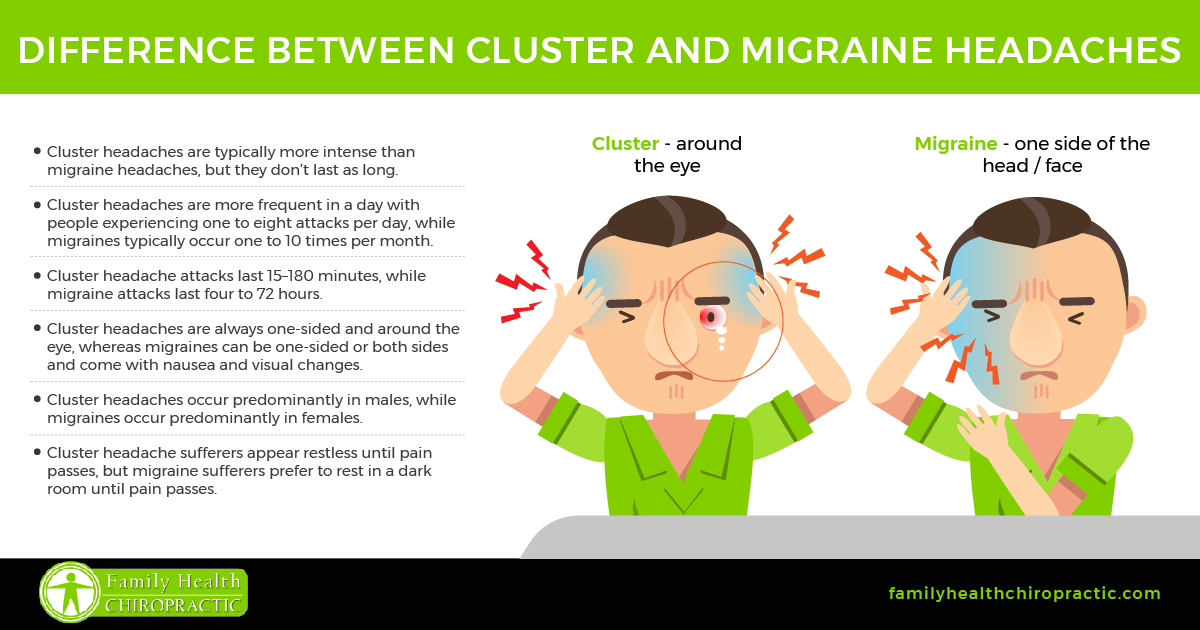
If a migraine episode lasts for longer than is typical for an individual, they should seek a doctor’s advice.
They should visit the emergency room if a migraine episode becomes too severe and at-home treatments do not alleviate symptoms.
An individual should seek immediate medical attention if they have the following symptoms:
- an extremely severe headache
- a headache that starts abruptly like a thunderclap, especially if the individual is aged over 50 years
- a migraine headache accompanied with a stiff neck, or fever, confusion, slurred speech, or seizures
- speech, vision, movement, or balance problems that differ from the regular migraine pattern
Always seek medical attention if someone has a headache following a head injury.
Preventing migraine involves identifying and avoiding an individual’s specific triggers.
With that in mind, keeping a headache diary that records migraine details and triggers can help someone predict when a migraine attack could occur./persistent-aura-without-infarction-1719540_final-77fc22afa7674ab2b8b9ac484e299152.png)
There are also a number of apps that can help people to track migraine symptoms and identify their triggers.
Learn more about migraine tracking apps here.
If someone finds that their triggers are weather-related, for example, extreme cold and wind, they could choose to stay indoors during this time.
When stress plays a role in someone’s migraine pattern, looking for ways to relax and relieve stress may be enough to prevent future migraine attacks.
In children, changing sleeping habits and improving their night-time routine may be enough to curtail migraine attacks.
Magnesium, vitamin B2, and Coenzyme q10 may have some success in preventing migraine.
Migraine attacks are severe headaches frequently accompanied by nausea and neurological symptoms.
There are four stages of migraine that have different durations. Overall, an attack may last for 4–72 hours, or even longer.
People with migraine may be able to identify particular events or circumstances that trigger the condition. They can use this information as part of a migraine prevention routine.
They can use this information as part of a migraine prevention routine.
If someone has an especially severe migraine episode, an extreme or sudden headache, one accompanied with fever or seizures, they should seek urgent medical attention.
Read this article in Spanish.
How long do migraines last? Duration, symptoms, and what to do
Migraine can cause severe, recurrent, and potentially disabling headaches that typically last from 4–72 hours. Symptoms may also include fatigue, impaired vision, and dizziness.
Many people associate migraine episodes with feelings of nausea, heightened sensitivity to light and sound, and occasionally skin and muscle sensitivity.
Migraine is surprisingly common. Around 39 million people in the United States experience this neurological disease’s incapacitating symptoms.
This article looks at how long migraine attacks last, migraine stages, causes, and common triggers. It then explores treatments, prevention, and when someone should seek help for symptoms.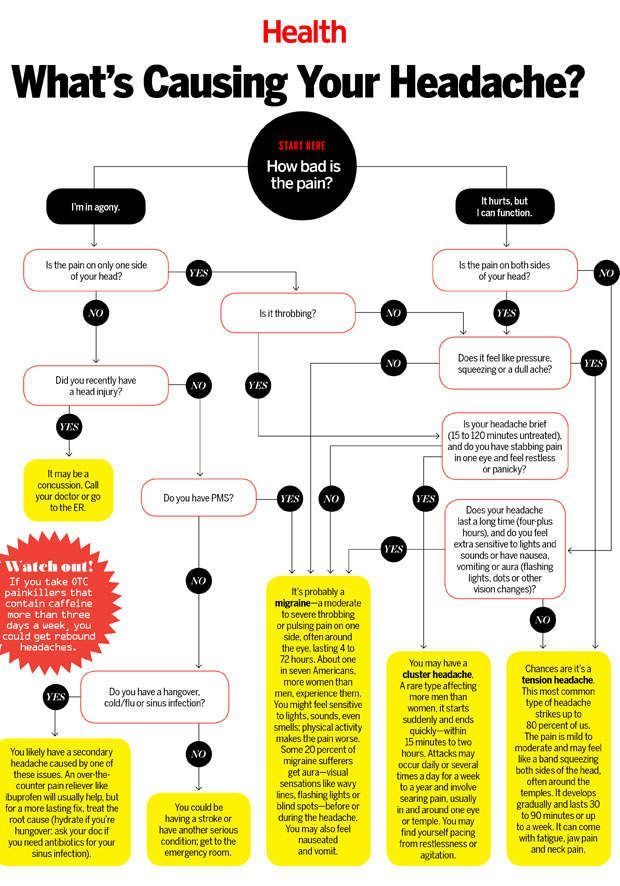
Migraine is a complex condition with different stages and contributing factors. They can last from 4–72 hours if left untreated.
The length and frequency of migraine varies from person to person.
There is an especially intense form of migraine called status migrainosus (SM).
These long-lasting migraine headaches can cause symptoms for more than 72 hours, even with treatment.
Although exact epidemiological data is lacking, an 11-year study showed that SM affects around 3% of people with migraine.
Migraine progresses through different phases that lead on from each other. Not everyone will experience each phase with every migraine attack they have. The four stages are:
- prodrome
- aura
- headache
- postdrome
Each stage lasts a different length of time, varying between people and between each migraine attack.
Understanding the distinct phases of a migraine attack can help people manage the condition.
When someone recognizes the earliest symptoms of a migraine episode, they can take measures to prevent the situation from progressing.
Here is an outline of the stages, including duration and the most common symptoms someone may experience:
Prodrome
This stage is also called the premonitory or warning stage. It may begin several days or just a couple of hours before the onset of the aura stage.
During this stage, an individual may notice subtle changes that are not necessarily headache-related. The symptoms serve as a warning of an upcoming migraine attack.
Prodrome symptoms include:
- anxiety
- constipation
- fatigue
- food cravings
- increased thirst and urination
- mood changes
- neck stiffness
Aura
Not everyone who has migraine also experiences the aura stage with each attack. It only occurs in around 25% of individuals with migraine.
The aura stage typically occurs shortly before the main migraine attack and lasts around 20–60 minutes. Auras are sensory disturbances that range from flashes of bright light to the inability to speak normally.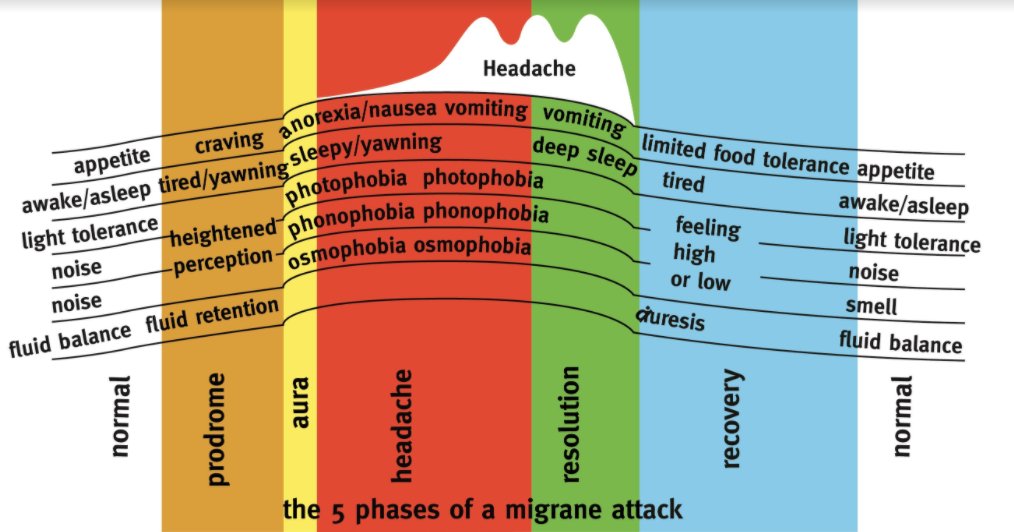
Aura symptoms include:
- dizziness
- hearing noises
- impaired vision, or hearing
- numbness or pins and needles in the limbs
- seeing bright or flashing lights, sparkles, colored spots, or zigzag lines
- slurred speech
- weakness in the face or body
The aura stage usually happens before the primary headache. However, in some adults, and commonly in children, the aura symptoms may occur with the migraine itself.
Headache
The symptoms during the headache stage are usually the same, no matter if someone experienced the aura stage or not. Headache symptoms include:
- blurred vision
- dizziness and lightheadedness
- extreme sensitivity to light and noises
- irritability
- possible sensitivity to odors, touch, and movement
- stiffness in the shoulders and neck
- throbbing pain on one or both sides of the head that worsens with movement or activity
- upset stomach, nausea, or vomiting
This stage is the most acute, with more than 90% of people experiencing symptoms severe enough to prevent them from functioning normally.
Postdrome
Postdrome happens at the end of the primary headache stage for around 80% of people. It can last for 24–48 hours and may include the following symptoms:
- aching body
- confusion
- difficulty concentrating
- dizziness
- elation or depression
- feeling drained
- weakness
Some people find that sudden head movement or a return to strenuous activity may cause the headache to return, but only briefly.
Identifying migraine causes and triggers can help people avoid them and prevent a migraine attack from occurring.
Triggers are different for everyone, but some common ones include:
- alcohol and caffeine
- bright lights
- changes in the weather
- dehydration
- diet
- hormonal changes
- odors
- overuse of medication
- stress
Migraine treatments can involve using medications and home remedies to reduce the severity of symptoms.
Home remedies include:
- increasing water intake
- napping
- resting in a dark and quiet room
- using a cold compress
- taking an over-the-counter pain reliever such as aspirin, ibuprofen, or naproxen
If home remedies do not relieve symptoms, an individual can ask their doctor for prescription medication.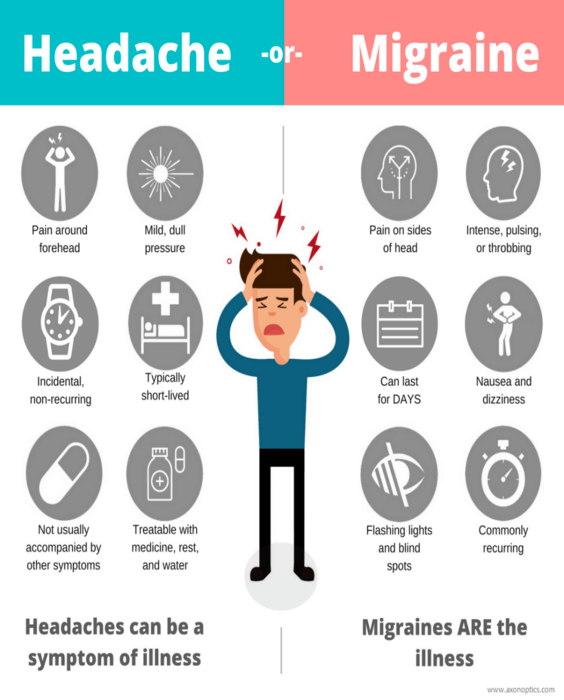
A doctor may recommend the following medications:
- antiepileptics
- antidepressants
- beta-blockers
- serotonin antagonists
- botulinum neurotoxins (Botox)
- CGRP antagonists
The American Migraine Foundation estimate that less than 50% of people with migraine seek help from a doctor.
If a migraine episode lasts for longer than is typical for an individual, they should seek a doctor’s advice.
They should visit the emergency room if a migraine episode becomes too severe and at-home treatments do not alleviate symptoms.
An individual should seek immediate medical attention if they have the following symptoms:
- an extremely severe headache
- a headache that starts abruptly like a thunderclap, especially if the individual is aged over 50 years
- a migraine headache accompanied with a stiff neck, or fever, confusion, slurred speech, or seizures
- speech, vision, movement, or balance problems that differ from the regular migraine pattern
Always seek medical attention if someone has a headache following a head injury.
Preventing migraine involves identifying and avoiding an individual’s specific triggers.
With that in mind, keeping a headache diary that records migraine details and triggers can help someone predict when a migraine attack could occur.
There are also a number of apps that can help people to track migraine symptoms and identify their triggers.
Learn more about migraine tracking apps here.
If someone finds that their triggers are weather-related, for example, extreme cold and wind, they could choose to stay indoors during this time.
When stress plays a role in someone’s migraine pattern, looking for ways to relax and relieve stress may be enough to prevent future migraine attacks.
In children, changing sleeping habits and improving their night-time routine may be enough to curtail migraine attacks.
Magnesium, vitamin B2, and Coenzyme q10 may have some success in preventing migraine.
Migraine attacks are severe headaches frequently accompanied by nausea and neurological symptoms.
There are four stages of migraine that have different durations. Overall, an attack may last for 4–72 hours, or even longer.
People with migraine may be able to identify particular events or circumstances that trigger the condition. They can use this information as part of a migraine prevention routine.
If someone has an especially severe migraine episode, an extreme or sudden headache, one accompanied with fever or seizures, they should seek urgent medical attention.
Read this article in Spanish.
Botulinum toxin
Author of the article: Chemordakov Ilya Alexandrovich ,
Head of the Center for the treatment of headache and facial pain, neurologist, cephalologist
Migraine is one of the most common types of headaches. It is so many-sided and difficult to diagnose that many people live with this disease without even knowing about it. How to recognize the presence of a disease and are there effective ways to treat it? We talked about this with Ilya Aleksandrovich Chemordakov, a neurologist at the SOVA multidisciplinary clinic, head of the Pain Treatment Center.
Ilya Aleksandrovich, how to define a migraine?
Migraine has many accompanying symptoms. These can be increased anxiety, panic attacks, decreased mood, poor sleep, soreness and tension in the muscles of the neck and neck, gastrointestinal disorders, as well as other pain syndromes, for example, compressive tension headaches or back pain. With a migraine, a headache can be of any localization, even in the occipital or in the neck, but most often it hurts in the temple on one side. Also, a migraine headache can lead to an increase in blood pressure, nausea, vomiting and mimic a hypertensive crisis. In addition, provoked by the weather, stress, insufficient or excessive sleep, flights and alcohol.
Main symptoms of migraine:
1. Headache of moderate or severe intensity.
2. Pulsating nature of the pain.
3. Pain on only one side of the head.
4. Pain occurs together with nausea, vomiting, increased sensitivity to light and sounds.
5. The pain is aggravated by simple physical activity (walking up stairs, changing body position).
If at least 2 out of 5 symptoms match, then you should definitely consult a specialist.
Why does a person have such seizures?
It should be understood that migraine is an inflammation of the nerve endings and blood vessels in the brain. The predisposition to the disease can be inherited. For example, if you have a migraine, then there is a good chance that the child may also have migraine attacks.
How is migraine diagnosed?
Unfortunately, there are no examination methods that will confirm the diagnosis of migraine. Brain scanning (CT, MRI), electroencephalography (EEG), ultrasound examination of the vessels of the head (ultrasound), consultation of an ophthalmologist, as a rule, are not informative in patients with migraine. Basically, these studies are needed to rule out other causes for headaches.
Are there cases when the doctor cannot make a correct diagnosis?
Indeed, often instead of a diagnosis of migraine put erroneous. For example, dyscirculatory encephalopathy with cephalgic syndrome, vegetovascular dystonia with cephalgic syndrome, hypertension with cephalgic syndrome, cervical osteochondrosis with migraine paroxysms, and so on.
Tell us what misconceptions exist among patients themselves?
Cervical spine and/or osteochondrosis are not associated with migraine. This is a very big misconception. Many people think that only women suffer from migraines, but this is also not true.
Are there drug restrictions in the treatment of migraine?
Migraine increases the risk of stroke, so patients with migraine should not use drugs that increase the risk of thrombosis, such as oral contraceptives. Also, vascular and nootropic drugs, muscle relaxants or “atlas inserts” are not used for migraine.
It turns out that migraine is not curable?
Yes, but you can reduce the number of seizures or get rid of them for a long time. Unfortunately, the effectiveness of the tablets is low (less than 40%). Therefore, the search for treatment options is still ongoing. But today there is an alternative – it is botulinum toxin.
Benefits of botulinum therapy:
Good tolerance. Unlike other drugs, botulinum toxin has no side effects. Injections are made with a thin needle, which the patient practically does not feel.
Longevity. The effect lasts from 3 to 6 months, which allows you to reduce or eliminate the use of other medicines.
cosmetic bonus. Part of the injection points is located in the frontal muscles, thus the drug is able to get rid of wrinkles in this area.
Rapidity. The procedure lasts up to 20 minutes.
How can the patient be helped in this way?
Botulinum toxin is a special substance that relaxes muscles and is used in cosmetology to get rid of wrinkles. In addition, it reduces the conduction of pain impulses from nerve endings. Thus, if you distribute the drug throughout the head, you can get rid of migraines for many months.
In addition, it reduces the conduction of pain impulses from nerve endings. Thus, if you distribute the drug throughout the head, you can get rid of migraines for many months.
How long does the effect last?
The effectiveness of one procedure usually lasts for 3 months, so it is recommended to repeat the injections of the drug every 12 weeks. In addition to blocking pain, there is a smoothing and prevention of wrinkles.
What else can help with migraine treatment?
Keeping a headache diary. This will help to collect important information for the neurologist: how often the head hurts, how long the headache lasts, what causes it, what symptoms accompany it, how many pain medications, and how often you take. This information is very valuable for establishing the correct diagnosis and provocateurs of headache, as well as for evaluating the effectiveness of treatment.
THERE ARE CONTRAINDICATIONS. YOU NEED TO CONSULT WITH A SPECIALIST
The materials posted on this page are for informational purposes and are intended for educational purposes. Site visitors should not use them as medical advice. Determining the diagnosis and choosing a treatment method remains the exclusive prerogative of your doctor!
Site visitors should not use them as medical advice. Determining the diagnosis and choosing a treatment method remains the exclusive prerogative of your doctor!
Childhood migraine | 1DMC
Migraine in children is a variant of the primary type of headache caused by a range of conditions. Pathology is accompanied by paroxysmal headaches, which can be unilateral or bilateral, as well as nausea, photophobia, muscle weakness and general deterioration.
A pediatric neurologist evaluates symptoms, diagnoses and treats migraine in children. The First Children’s Medical Center employs qualified pediatric neurologists with many years of experience. If your child suffers from migraines, our doctors will select the best treatment for your child.
How to understand that a child has a migraine?
As the pathology increases, the main symptoms of migraine in children are:
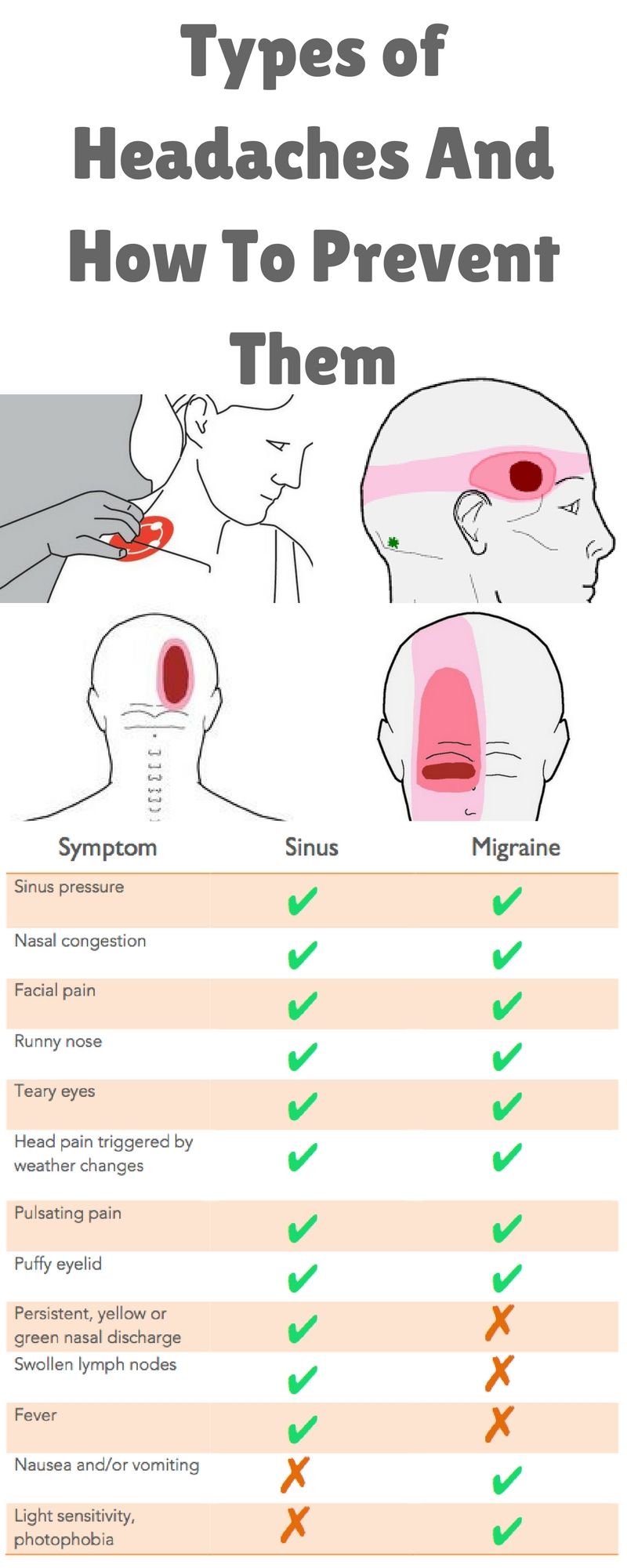
Symptoms may be aggravated by exposure to provoking factors: bright light, noise, strong odors, etc.
A child with migraine not only complains of frequent headaches, he becomes lethargic, lethargic, seeks to find the darkest and quietest place in the house, refuses to from communication and tries to stay alone.
In adolescents and older children, migraine attacks are almost always accompanied by various visual, auditory and olfactory effects, when the child smells extraneous, unpleasant odors for him or feels barely noticeable aromas too strongly, sees non-existent elements before his eyes (dots, lines, spirals) hears strange sounds.
How long does a migraine last in children?
Most children have a migraine attack that lasts 30 minutes to 48 hours. Preschool children during an attack cannot sleep, complain of pain in the stomach and look unwell. In boys, migraines tend to start at an earlier age and may disappear during puberty.
Diagnosis
A thorough history taking is of the utmost importance in determining the cause of headaches in children.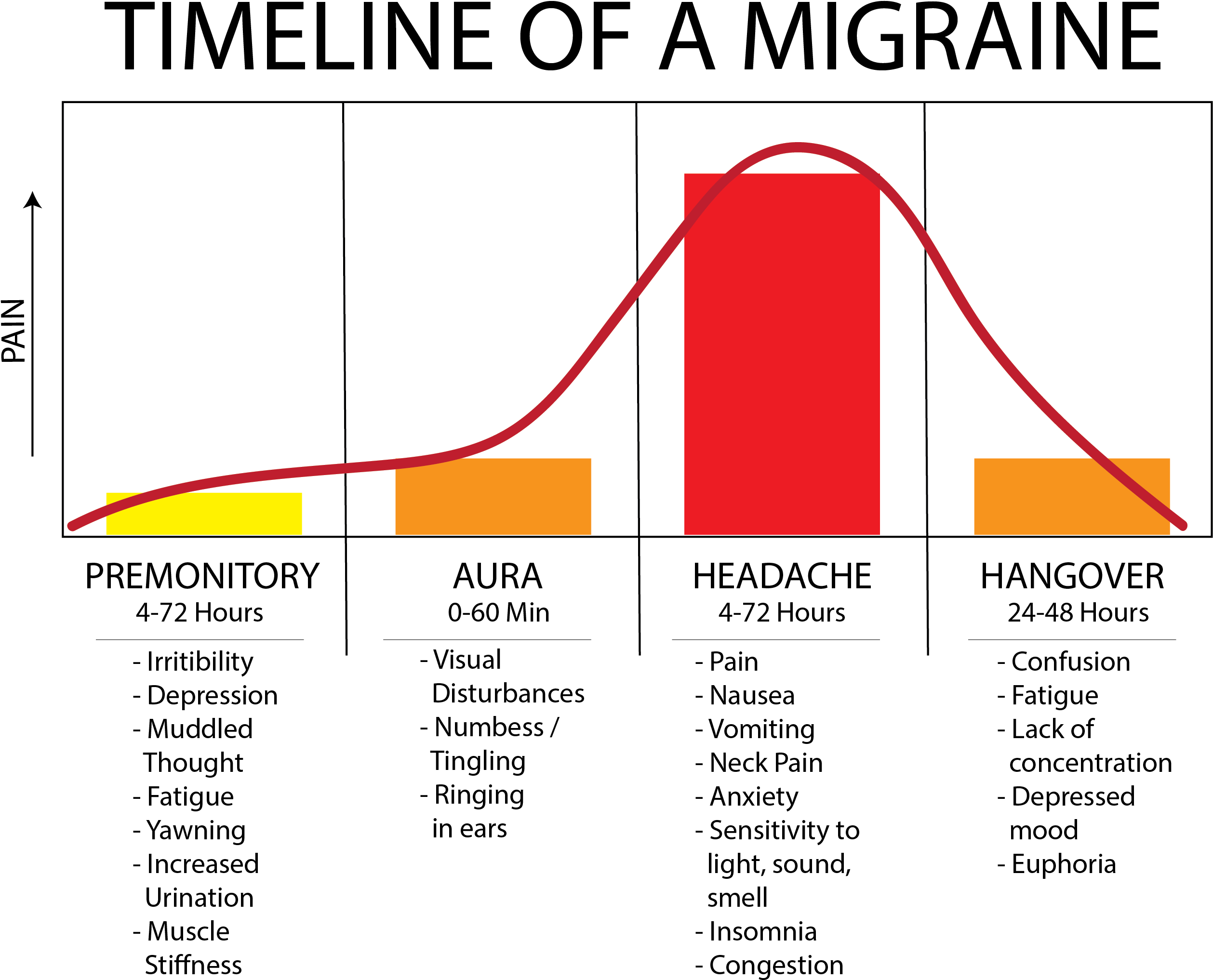 A pediatric neurologist at the appointment conducts a detailed survey of the patient and his parents, finding out:
A pediatric neurologist at the appointment conducts a detailed survey of the patient and his parents, finding out:
- the child’s lifestyle;
- diet;
- the amount of study and additional workload;
- the presence of neurological disorders in parents or other close relatives;
- the nature of the attacks: the intensity of pain, the presence of additional effects;
- duration of migraine episodes.
If the child has other diseases that can directly or indirectly affect the course of migraine, specialized specialists (cardiologists, epileptologists, somnologists, etc.) are involved in consultations.
How to treat migraine in children?
Please note that children cannot be treated in the same way as adults. Most medications (both painkillers and those meant to prevent migraine) have not been tested in children, and some are banned altogether. So please be careful. For example, children under 12 should not be given aspirin.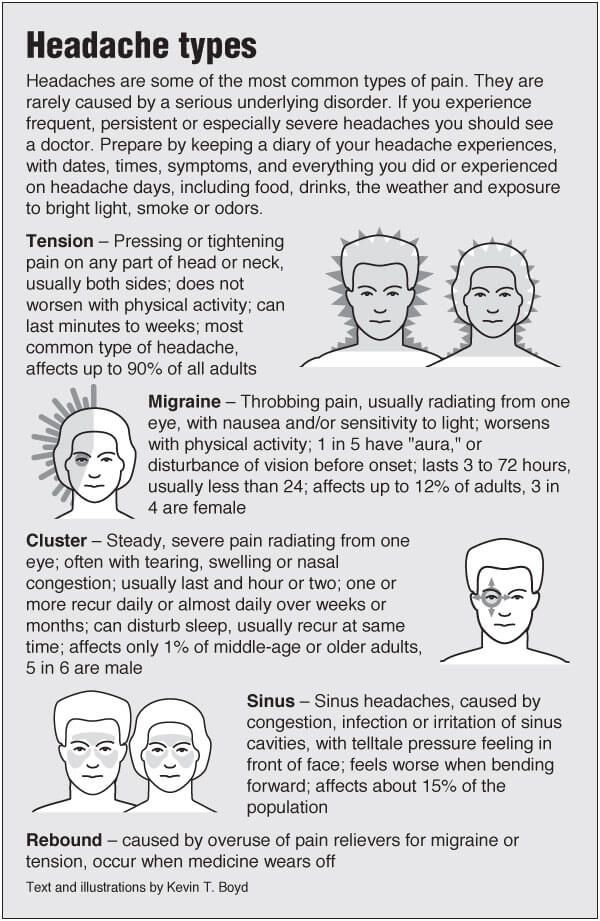 Instead
Instead
the doctor will select drugs for pain relief and relief of nausea. Never give children any medicine just because you usually use it! For the treatment of migraine in your child, all recommendations and prescriptions must be issued by a doctor. Discuss any medications you are giving or plan to give your child with a pediatric neurologist.
During a migraine attack in a child:
- Try to avoid medication.
- Give your child the opportunity to relax in a dark, quiet room.
- Give the child something to eat (you can have something sweet) and drink.
- If necessary, give half or a whole tablet of paracetamol or ibuprofen. These preparations also exist in the form of a suspension.
- If you have to give your child pain medication more than twice a week, discuss migraine prevention with your pediatrician and pediatric neurologist.
- In children, seizures become more frequent under the influence of the same provocateurs as in adults.
 Therefore, in case of frequent seizures, try to identify triggers for seizures in your child.
Therefore, in case of frequent seizures, try to identify triggers for seizures in your child.
Prevention
The following rules for living with a migraine can greatly help your child:
- Do your best to establish a sleep schedule – it is advisable for the child to go to bed and wake up at about the same time every day, including weekends.
- Encourage your child to participate in sports, fitness, gymnastics, as this reduces stress, anxiety, improves mood and allows you to control weight (all of these factors are risk factors for more migraine attacks).
- The child should eat regularly and not skip meals because a decrease in blood glucose levels can lead to the development of a migraine attack. Try to arrange for your child to eat more fresh foods that are free of preservatives and chemical additives.
- Try to reduce the amount of caffeine your child gets. It is advisable not to exceed one cup of carbonated drinks per day.


 Therefore, in case of frequent seizures, try to identify triggers for seizures in your child.
Therefore, in case of frequent seizures, try to identify triggers for seizures in your child.